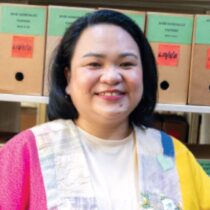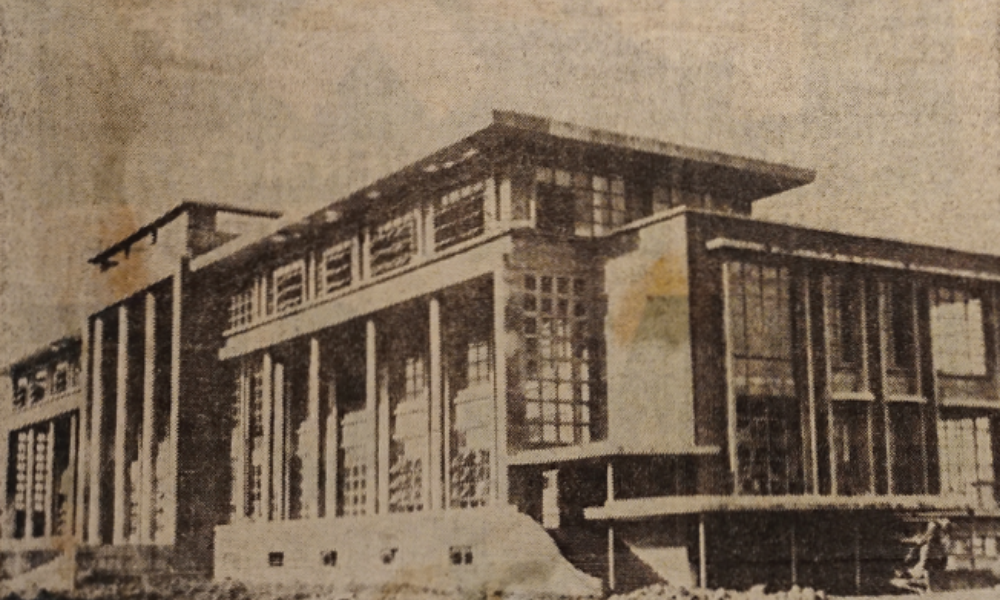Magazine

I Know This Place
A visiting researcher from the University of the Philippines identifies significant documents—and locations—in Bentley collections.
By Katie Vloet
Eimee Lagrama was digging through files last August when she came across a photo she’d never seen. It was a picture of a bullet-riddled library building on the campus of the University of the Philippines, photographed after the World War II Battle of Manila when the United States and the Philippines fought against Japan to liberate the capital city.
“I have pictures in our archives of the building from the outside, but never from the inside,” says Lagrama, head of the university archives division and deputy university librarian at the University of the Philippines, Diliman (UPD). “It was emotional to see it in the sense that I hadn’t known how damaged it was.”
She unearthed the photo not in her home country but at the Bentley Historical Library. Lagrama visited for the month of August 2024 thanks to a Bentley fellowship, which allowed her to sift through more than 100 collections that contained material related to the Philippines.

A library in Manilla, titled “Hayden Memorial Library in a Manilla Suburb, Recovery from Wartime Devastation,” in the Michigan Daily.
Ricky Punzalan, director of the Museum Studies Program and associate professor of information at the U-M School of Information, is a friend of Lagrama from their time as students at UPD. Punzalan and Bentley Director Alexis A. Antracoli went to the Philippines in 2023 as part of a multi-year reparative project surrounding Philippine collections at U-M called ReConnect/ReCollect. There, they spoke with Lagrama about ways she could shed light on materials in the Bentley, which paved the way for her visit.
U-M and the University of the Philippines have a long history of collaboration, Lagrama points out—beginning when the United States took control of the Philippines from Spain after the Spanish-American War.
Among the collections she researched were several boxes of materials from the Gerald R. Ford School of Public Policy, where she found the photo of the war-ravaged library building, which she has since shared with her own university’s archives.
“I didn’t know what to expect. But I found so many things [like] photos of my dad’s hometown, including a church that is still standing, and I couldn’t help but be excited. I said, ‘Alexis, I know this place! We used to play there,’” she recalls. She also texted colleagues back home, too excited to worry about the 12-hour time difference.
She looked through paperwork in the late Michigan Senator Carl Levin’s collection; papers and diaries of Frederick G. Behner, a Thomasite educator who traveled to the Philippines in the early 1900s; pictures of a faculty member swimming in a pond—some demure, some less so—as well as love letters to his girlfriend; and extensive documentation about Philippine plants from the University Herbarium collection.
With her visit, Lagrama became part of the long tradition of collaboration between the two universities—a history that is richer and more intertwined than she previously understood.
“It’s not just an exchange of people,” she says. “It’s an exchange of learning and ideas, too.”
